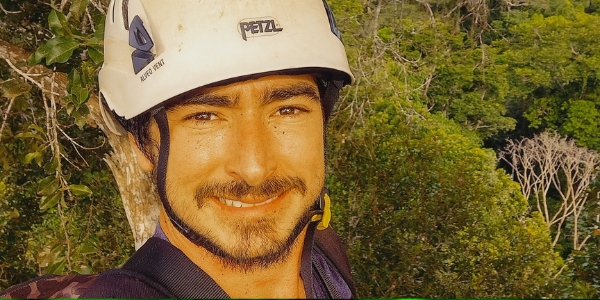Ag conversion destroys savanna biodiversity in India
A study performed by researchers in the 7 districts of Maharashtra have found that agriculture conversions such as tillage agriculture and afforestation, destroys and degrades undervalued the savanna biodiversity, an ecosystems with a lot of grasses and few trees found in temperate and tropical regions.

The study titled, ‘Tillage agriculture and afforestation threaten tropical savanna plant communities across a broad rainfall gradient in India’ was published on November 22, 2023, in Journal of Ecology by British Ecological Society. The study was conducted by a team of 5 researchers: Ashish N. Nerlekar, Avishkar Munje, Pranav Mhaisalkar, Joseph W. Veldman, and Ankila J. Hiremath from Fergusson College, department of ecology and conservation biology and A&M University in Texas, Brandenburg Technical University in Germany and Ashoka Trust for Research in Ecology and the Environment, Bengaluru.
To select tree plantations, the researchers identified sites that were afforested during the post-colonial era (since 1947). Most plantations are of exotic species, typically Gliricidia sepium (Fabaceae), Eucalyptus globulus (Myrtaceae) and Cassia siamea (Fabaceae), some native tree plantations which are commonly planted with Azadirachta indica (Meliaceae), Acacia catechu (Fabaceae) and Dalbergia sissoo (Fabaceae). All the sites are grazed by domestic livestock and wild herbivores.
Ashish N. Nerlekar said that the research was carried out in early 2020 in the 7 districts of Maharashtra: Nashik, Pune, Ahmednagar, Satara, Solapur, Kolhapur and Sangli and the research paper was published last year. The samples were collected during September and October 2021, the peak growing season for herbaceous plants.The reason to conduct this study, Mr. Nerlekar said, is because Savanna biodiversity remains undocumented in most regions of tropical Asia. The study was carried out in 45,000 km of area.
“In western Maharashtra old-growth savannas occupy a broad rainfall gradient and are increasingly rare due to agricultural conversion and afforestation. To understand the ecological consequences of land-use change, we sampled herbaceous plant [shrubs, grasses, flowering plants and ferns that does not have woody tissues] communities of old-growth savannas from 60 sites with 15 samples belonging to each of four land-use types: old-growth savannas, tree plantations, tillage agriculture, and agricultural fallows. We found that conversion of old-growth savannas to tillage agriculture destroys distinctive herbaceous plant communities that do not spontaneously recover on fallowed land. Similarly, afforestation alters savanna plant community composition and reduces native plant diversity,” explained Mr. Nerlekar.
Researchers suggest that agricultural fallows are unlikely to play a role in passive savanna restoration in tropical India and in the absence of active restoration, tillage agriculture results in a permanent loss of savanna plant diversity.
For tillage agriculture, the researchers included sites that were actively used to grow cash and food crops including millets, pigeon pea, corn, soybean, sugarcane and cotton that require tilling of the soil. Inclusion of sites also depended on their accessibility and on permission from farmers to sample their fields. For fallows, they selected parcels of land with evidence of previous cultivation, including bunds (raised earth) around the parcel, and presence of tillage agriculture adjacent to the parcel.
Avishkar Munje said, “While a multitude of drivers of global change are transforming Earth’s grassy biomes, land-use change has emerged as an acute and widespread cause of biodiversity loss in tropical savannas, plant communities of tropical savannas are highly susceptible to changes in land use that disrupt historical disturbance regimes of frequent fire and herbivory or that introduce novel stresses that deplete below ground bud banks.”
Tillage agriculture destroys savanna communities by killing underground organs of long-lived perennial plants that are extremely slow to recolonize after agriculture is abandoned. “In addition to tillage agriculture, tree planting; whether motivated by wood production, forest restoration, or carbon sequestration; it is a growing threat to savannas,” added Mr. Munje.
Savannas of tropical India contain at least 206 endemic plants, many of which are globally threatened. Maharashtra’s savannas support the livelihoods of thousands of Dhangar [a pastoral community] by provisioning forage for cattle. “The Dhangar can be credited for maintaining the disturbance regimes of old-growth savannas through traditional management of frequent fire and herbivory,” added Mr. Munje.
The researchers are concerned that as a signatory to the Bonn Challenge, India’s commitment to restore millions of hectares wrongly targets old-growth savannas for afforestation. The Bonn Challenge is a global effort to bring 150 million hectares of deforested and degraded land into restoration by 2020 and 350 million hectares by 2030. India has committed to restore 26 million hectares of degraded and deforested land by 2030.
Pranav Mhaisalkar said, “We hope that conservation scientists and environmental policymakers will use our results as evidence of the negative consequence of tree planting in old-growth savannas and implement safeguards against afforestation. Finally, amid the emphasis on climate change in ecology and conservation, our results from savannas of India remind us not to lose sight of the immediate threat of land-use change to tropical biodiversity.”
Read the full story in The Hindu



